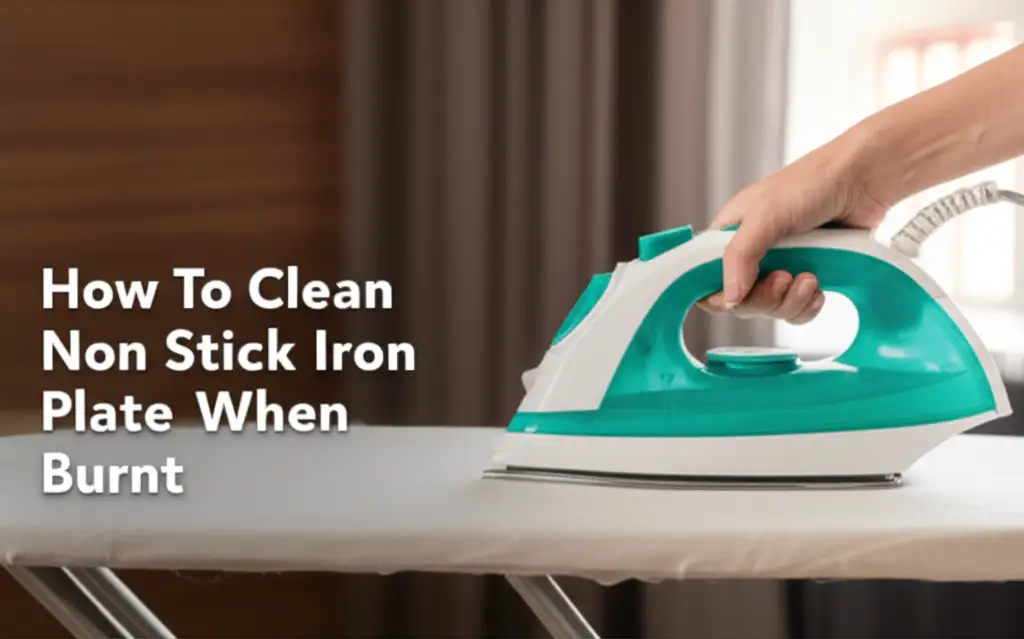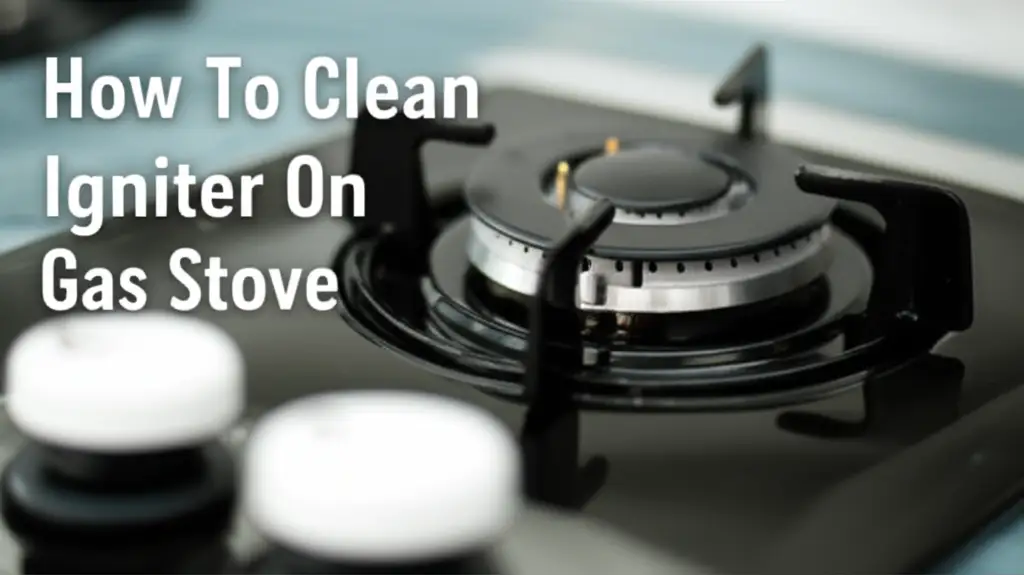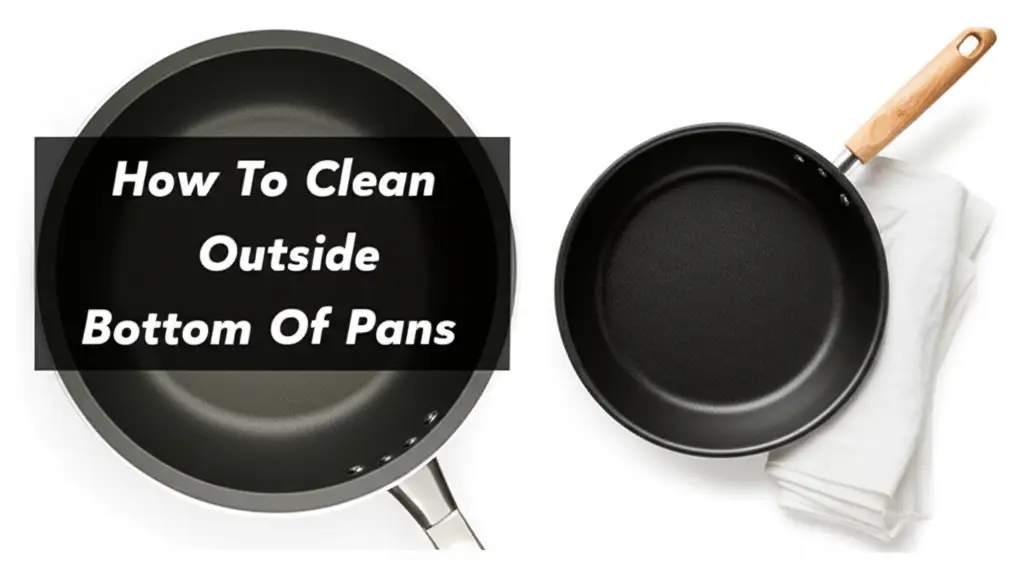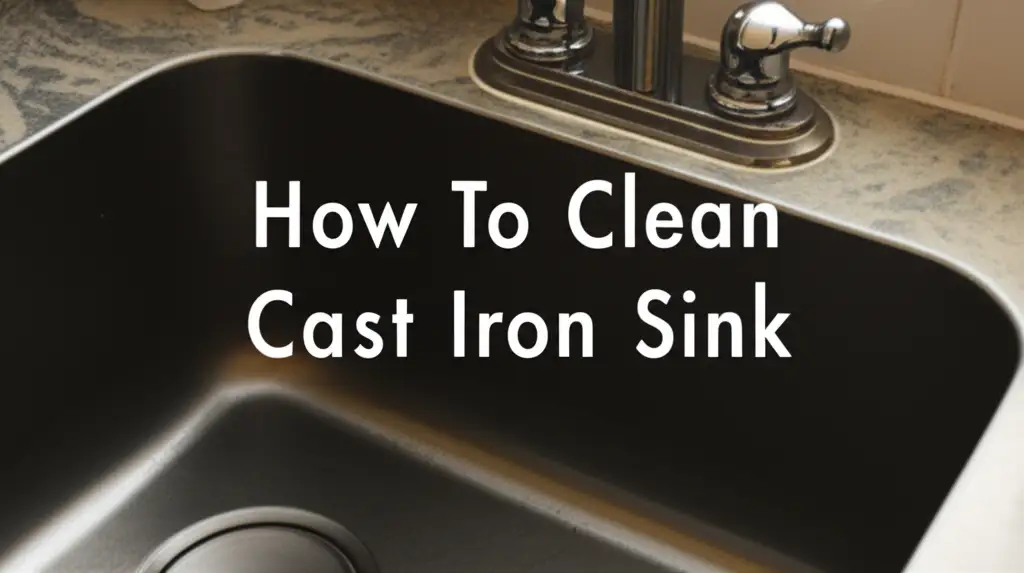· Kitchen Maintenance · 15 min read
How To Clean Non Stick Iron Plate When Burnt

How To Clean a Burnt Non-Stick Iron Plate Effectively
We all use non-stick iron plates regularly. These plates are great for quick meals like grilled sandwiches or pancakes. However, sometimes food burns onto the surface. This can be frustrating and seem hard to fix. You might worry about damaging the non-stick coating.
A burnt non-stick iron plate does not mean the end for your appliance. Cleaning burnt residue requires gentle methods. Using harsh scrubbers or chemicals can harm the surface. My goal is to show you safe and simple ways to restore your plate. This article will guide you through the process step-by-step. We will also discuss how to prevent future burning.
Takeaway: Restore Your Burnt Non-Stick Plate Safely
- Always allow the iron plate to cool completely before cleaning.
- Use soft cloths, sponges, or silicone spatulas. Avoid metal tools.
- Mild dish soap, baking soda, and vinegar are safe cleaning agents.
- Do not use abrasive cleaners or harsh chemicals.
- Prevent future burns by managing heat and cleaning regularly.
How do you clean a non-stick iron plate when burnt?
To clean a burnt non-stick iron plate, first let it cool completely. Then, soak the plate in warm, soapy water to loosen residue. For stubborn burns, apply a paste of baking soda and water. Let it sit, then gently scrub with a soft sponge or cloth. Rinse thoroughly and dry.
Understanding Non-Stick Iron Plates and Why They Burn
Non-stick iron plates make cooking easier. They have a special coating that prevents food from sticking. This coating is often made from materials like PTFE, commonly known as Teflon. This material creates a smooth, low-friction surface. Knowing how this coating works helps us clean it safely.
These plates are popular in sandwich makers, waffle irons, and griddles. They simplify cooking and cleanup. However, they also require specific care. If not cared for properly, their non-stick properties can degrade. This makes burning more likely.
The Science Behind Non-Stick Surfaces
Non-stick coatings work because they are non-porous and slippery. Food molecules do not easily bond with the surface. This means food slides off easily. The coating is quite thin and delicate. It can be scratched or damaged by harsh treatment. High heat can also break down the coating over time.
When the coating is new, food rarely sticks. As it wears, tiny scratches or worn spots appear. These spots can trap food particles. This leads to sticking and eventually burning. Understanding how non-stick surfaces function helps in their proper maintenance. You can learn more about these coatings by checking out our guide on Understanding Non-Stick Coatings.
Common Causes of Burnt Residue
Several things can cause food to burn onto a non-stick iron plate. High heat is a common culprit. Non-stick coatings perform best at medium to low temperatures. If the plate gets too hot, food can char quickly. This leaves a tough, burnt layer.
Using cooking sprays can also cause residue buildup. Some sprays contain ingredients that bake onto the surface. This creates a sticky, dark film over time. Worn non-stick coating is another major reason. Once the coating loses its effectiveness, food sticks. This sticking often leads to burning, making cleanup difficult. Always watch your cooking temperature to avoid burning food.
Essential Supplies for Cleaning Burnt Non-Stick Surfaces
Before you start cleaning, gather the right tools. Using the wrong tools can scratch or damage the non-stick coating. Damaged coating makes the plate less effective. It can also lead to more sticking and burning in the future. We want to clean the plate without causing more problems.
Your cleaning supplies should be gentle. Avoid anything abrasive. This includes steel wool, harsh scrubbers, or metal spatulas. These items will definitely ruin your non-stick surface. Always choose soft materials.
Gentle Cleaning Agents
Mild dish soap is your best friend for non-stick cleaning. It cuts grease and loosens food particles. White vinegar is another excellent option. It helps break down stubborn stains and odors. Baking soda is a mild abrasive that can gently lift burnt residue.
You might also consider specialized non-stick cleaners. These are designed specifically for delicate surfaces. However, simple household items often work just as well. Always check the ingredients for anything harsh. Make sure any cleaner you use is safe for food contact areas. Keeping your kitchen cleaning supplies safe is always a good idea; find out more about Safe Kitchen Cleaning Supplies.
Soft Tools for Safe Scraping
You will need soft tools to remove burnt food. A silicone spatula is perfect for scraping. Its flexible edge can get under burnt bits without scratching. A soft cloth or sponge is essential for wiping. Microfiber cloths are very absorbent and gentle.
For slightly more stubborn spots, a non-scratch scrub pad works. Look for pads labeled “non-scratch” or “safe for non-stick cookware.” Even natural bristle brushes can be used if they are soft enough. The key is to avoid anything that feels rough or hard. Remember, gentle is always better for non-stick surfaces.
Step-by-Step Method: Cleaning Lightly Burnt Non-Stick Iron Plates
When your non-stick iron plate has light burns, act quickly. Gentle methods are usually enough to fix the issue. The goal is to remove the burnt food without scrubbing too hard. This helps keep the non-stick coating intact.
Always start with the mildest approach first. Increase intensity only if needed. This reduces the risk of damage. Many minor burns can be cleaned easily with basic kitchen items. This method saves you time and effort.
Soaking and Gentle Wiping
First, let the iron plate cool down completely. Never put a hot plate into water. This can warp the plate or damage the coating. Once cool, fill the plate with warm water and a few drops of mild dish soap. Let it soak for about 15-30 minutes. The warm water helps loosen the burnt food.
After soaking, most of the burnt residue should be soft. Use a soft sponge or cloth to gently wipe it away. For any remaining bits, use a silicone spatula. Carefully push the spatula under the softened food. Avoid digging or prying. Rinse the plate thoroughly with clean water. Dry it completely with a soft towel.
Baking Soda Paste Method
For slightly more stubborn but still light burns, baking soda works wonders. Make a paste using baking soda and a little water. The consistency should be like toothpaste. Apply this paste directly onto the burnt areas. Make sure the entire burnt spot is covered.
Let the baking soda paste sit on the burnt area for 15-20 minutes. This allows the baking soda to break down the carbonized food. After waiting, gently scrub the paste and the burnt residue with a soft, damp sponge. The baking soda provides a very mild abrasive action. It lifts the burnt material without scratching. Rinse well and dry completely. This method is safe and effective for many light burns.
Tackling Stubborn Burnt Residue on Non-Stick Iron Plates
Sometimes, the burnt residue is very tough. It sticks hard to the surface. For these stubborn spots, you need a slightly stronger approach. However, remember to stay gentle. We still want to protect the non-stick coating. Do not use metal or harsh chemicals.
These methods use common household items. They are designed to break down carbonized food. They work by softening the burnt layer. This makes it easier to lift off the plate. Patience is key when dealing with stubborn burns.
Vinegar and Water Solution
Vinegar is a mild acid that can break down burnt food. Mix equal parts white vinegar and water in a spray bottle. Spray this solution generously over the burnt areas. Let it sit for at least 30 minutes, or even a few hours for very stubborn spots. The acidity helps to loosen the char.
After soaking, use a soft sponge or non-scratch scrub pad. Gently scrub the burnt residue. You might need to reapply the solution and soak again. For very tough spots, you can heat the vinegar solution slightly before applying it, but do not boil it on the non-stick plate itself. Always rinse the plate well with plain water after using vinegar. The vinegar smell will dissipate quickly.
Dish Soap and Hot Water Soak
For truly persistent burnt-on food, a prolonged hot water and dish soap soak is effective. Fill the non-stick iron plate with very hot water. Add a generous amount of mild dish soap. Let the plate soak overnight. The long soaking time allows the soap and hot water to penetrate the burnt layers.
The next morning, the burnt residue should be significantly softer. Use a silicone spatula to scrape away the loosened bits. Follow up with a soft sponge and more dish soap. You can rub gently in circular motions. Rinse the plate thoroughly under running water. Ensure all soap residue is gone. This method is safe and often very effective for difficult burns. If you’re looking for more ways to clean tough spots on appliances, check out our tips for Deep Cleaning Kitchen Appliances.
Using a Non-Abrasive Scrubber
Sometimes, you need a little more scrubbing power. A non-abrasive scrubber is the answer. These scrubbers are made from soft materials that will not scratch non-stick coatings. Look for ones specifically marked “non-scratch” or “safe for delicate surfaces.” Many brands make these.
Apply a small amount of mild dish soap directly to the burnt area. Dampen your non-abrasive scrubber. Gently scrub the burnt spots in small circles. Apply only light pressure. Let the scrubber do the work. If the residue is not coming off, soak the plate again. Then try scrubbing once more. Never force the burnt material off. It is better to repeat the soaking and gentle scrubbing process.
Restoring and Maintaining Your Non-Stick Iron Plate After Cleaning
After successfully cleaning a burnt non-stick iron plate, proper care is crucial. This step helps prolong the life of your appliance. It also ensures food continues to release easily. Skipping maintenance can lead to future sticking and burning. A well-maintained plate performs better and lasts longer.
Good maintenance habits protect the non-stick coating. They prevent wear and tear. This saves you money in the long run. You will not need to replace your iron plate as often. These simple steps keep your appliance in top condition.
Re-seasoning a Non-Stick Surface
Many non-stick surfaces can benefit from re-seasoning, although this is more common for traditional cast iron. For non-stick iron plates, true re-seasoning with oil is generally not needed or recommended. The non-stick coating itself is designed to be non-porous. However, you can help restore its slickness.
After cleaning, gently wipe the entire surface of the plate with a small amount of cooking oil. Use a paper towel to apply a very thin, even layer. Then, wipe off any excess oil. This creates a protective barrier. It also helps prevent future food from sticking. This simple oil wipe can make a difference in how well food releases. It is a quick and effective maintenance step. You can learn more about general care for these surfaces by reading about Caring for Non-Stick Cookware.
Post-Cleaning Care Tips
After cleaning and optionally re-oiling, store your non-stick iron plate properly. Avoid stacking heavy items on top of it. If you must stack, place a soft cloth or paper towel between plates. This prevents scratches. Scratches are the main enemy of non-stick coatings.
Always allow the plate to cool completely before cleaning. Thermal shock can damage the coating. Hand wash your non-stick plate whenever possible. Dishwashers can be too harsh. The high heat and strong detergents can degrade the non-stick surface over time. Gentle hand washing preserves the coating much better. Keep using soft utensils when cooking. Avoid metal spatulas or tongs.
Preventing Future Burnt Stains on Non-Stick Iron Plates
The best way to deal with burnt non-stick iron plates is to prevent burns from happening. A few simple practices can keep your plate clean. This saves you time and effort. It also extends the life of your appliance. Prevention is always easier than cleaning.
Understanding how to use your non-stick plate correctly is key. This includes managing heat and choosing the right tools. Good habits ensure your plate remains non-stick for years. Let’s look at some important preventative measures.
Proper Heat Management
Non-stick coatings work best at medium to low heat settings. High heat can quickly damage the coating. It can also cause food to burn and stick. Always preheat your non-stick iron plate gradually. Do not blast it with the highest heat. Give it a few minutes to warm up evenly.
Use the lowest effective temperature for your cooking. If your food is browning too quickly, lower the heat. This helps prevent scorching. Overheating can also release harmful fumes from some non-stick coatings. So, proper heat management is important for safety and for the plate’s longevity. This is a critical step in preventing residue.
Regular Cleaning Habits
Clean your non-stick iron plate after every use. Do not let food residue sit on the surface. Even small bits of food can become stubborn if left too long. Once the plate cools, wipe it down with a damp cloth and mild soap. This prevents buildup.
If you clean regularly, you will rarely face tough burnt stains. Quick cleaning after each use also helps maintain the non-stick properties. It keeps the surface smooth and ready for the next use. Regular cleaning is a simple habit with big benefits. It ensures your plate remains pristine. You can get more details on prevention in our article about Preventing Burnt Food Residue.
Avoiding Abrasive Utensils
Never use metal utensils on your non-stick iron plate. This includes metal spatulas, forks, or knives. Metal can scratch and chip the delicate non-stick coating. Even small scratches can lead to more sticking and burning. Once the coating is damaged, it is hard to repair.
Instead, use silicone, wood, or plastic utensils. These materials are soft and will not harm the non-stick surface. Always choose tools specifically designed for non-stick cookware. This simple choice protects your plate. It helps maintain its non-stick properties for a longer time. Proper utensil use is a small change with a big impact.
When to Consider Replacing Your Non-Stick Iron Plate
Even with the best care, non-stick iron plates do not last forever. The coating wears down over time. It is important to know when to replace your plate. Using a damaged non-stick surface can affect your cooking. It can also pose health risks.
Replacing a worn-out plate is a necessary part of kitchen maintenance. Do not hold onto a damaged plate for too long. Your cooking results will improve with a new, effective non-stick surface. Pay attention to the signs of wear.
Signs of Coating Damage
Look for visible signs of damage on your non-stick iron plate. If the coating is flaking, peeling, or bubbling, it is time for a replacement. These are clear indicators that the non-stick properties are gone. Small scratches are also problematic. They allow food to stick and can worsen over time.
Discoloration that does not wash off is another sign. If your plate looks dull or uneven, the coating might be compromised. Remember, once the non-stick coating is truly damaged, its effectiveness is lost. Continuing to use it can mean food sticks constantly. This makes cleaning impossible.
Health and Safety Concerns
Damaged non-stick coatings can also raise health concerns. When the coating flakes, tiny particles can get into your food. While small amounts are generally considered safe, it is best to avoid ingesting them. Also, severely overheated non-stick coatings can release fumes. These fumes can be harmful if inhaled.
If your non-stick plate is heavily scratched or peeling, it is safer to replace it. A healthy non-stick surface is smooth and intact. Prioritize your safety and cooking experience. A new non-stick iron plate provides peace of mind. It also ensures your meals cook evenly and safely.
FAQ Section
Can I use steel wool on a non-stick iron plate?
No, never use steel wool on a non-stick iron plate. Steel wool is highly abrasive. It will scratch and ruin the delicate non-stick coating instantly. Always use soft sponges, cloths, or non-scratch scrub pads to clean non-stick surfaces. This protects the coating and prolongs the plate’s life.
Is burnt non-stick coating dangerous?
Severely burnt or flaking non-stick coating can be concerning. Small particles of the coating may flake into food. Inhaling fumes from an overheated, damaged non-stick plate can also cause temporary flu-like symptoms. It is best to replace non-stick plates with significant damage to ensure safety.
How often should I clean my non-stick iron plate?
You should clean your non-stick iron plate after every use. Allow it to cool, then gently wipe it with warm, soapy water. Regular cleaning prevents food buildup and makes deep cleaning less necessary. This simple habit helps maintain the non-stick properties and extends the plate’s lifespan.
What causes non-stick plates to burn?
Non-stick plates burn due to excessive heat, using metal utensils that scratch the coating, or cooking sprays that leave residue. Over time, the non-stick coating can also naturally wear down. These factors cause food to stick and char onto the surface. Proper heat control and gentle care prevent burning.
Can I use oven cleaner on non-stick surfaces?
No, do not use oven cleaner on non-stick surfaces. Oven cleaners contain harsh chemicals. These chemicals will damage the non-stick coating. They can strip away the protective layer. Stick to mild dish soap, baking soda, and vinegar for safe and effective cleaning.
Conclusion
Cleaning a burnt non-stick iron plate does not have to be a difficult task. We have covered several effective and safe methods. From simple warm water soaks to using baking soda or vinegar, gentle approaches work best. Always let your plate cool completely first. Remember to use soft cleaning tools, like silicone spatulas and non-scratch sponges. These tools protect the delicate non-stick coating.
Prevention is key to keeping your non-stick iron plate in great shape. Manage your cooking heat carefully. Avoid using metal utensils that can scratch the surface. Clean your plate regularly after each use. These simple habits will extend the life of your appliance. If the non-stick coating shows significant damage like flaking, it is time for a replacement. Prioritize your safety and cooking experience. Keep your non-stick iron plate clean and ready for your next meal.
- non-stick cleaning
- burnt plate
- iron care
- appliance maintenance
- kitchen hacks
- safe cleaning methods- non-stick cleaning
- burnt plate
- iron care
- appliance maintenance
- kitchen hacks
- safe cleaning methods




